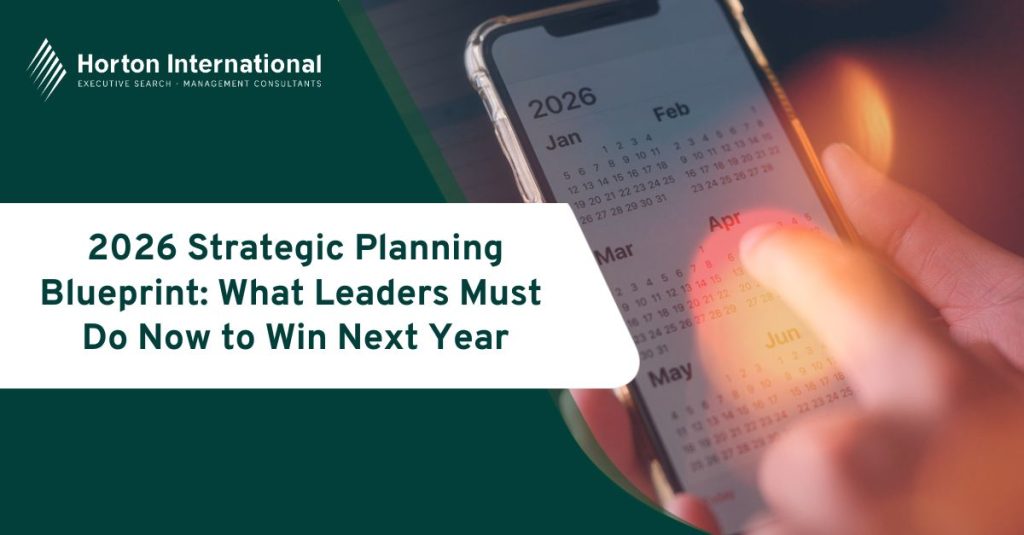Many seasoned leaders are grappling with an uncomfortable reality – their hard-earned expertise may no longer speak for itself. In an era where 84% of marketing professionals report experiencing age-related discrimination, mid-career executives are facing a critical moment that demands strategic brand evolution rather than passive hope.1
For executives over 40, a personal brand refresh has become a strategic imperative – it can determine whether you’re perceived as an industry stalwart or an outdated relic.
The Brand Perception Gap
The most insidious career threat facing established executives is the widening gap between self-perception and market perception. You’ve evolved and developed new competencies, yet your professional brand may still reflect the executive you were five years ago, or even ten!
This misalignment may sink you. Recruiters overlook you for suitable roles. Board opportunities bypass you, despite relevant experience. Strategic consulting gigs go to competitors who’ve simply communicated their evolution more effectively.
The digital age compounds this challenge. Your LinkedIn profile and executive biography may have become static monuments to past achievements rather than dynamic representations of current capabilities.
Strategic Brand Evolution and Digital Presence
Successful executive reinvention requires surgical precision rather than wholesale transformation. We’re talking a little nip and tuck, not organ transplantation.
Begin by conducting a brand audit that examines how others currently perceive you versus how you wish to be positioned. This might be painful, but without it you cannot find the perception gaps. Don’t know who to ask? Your children, their friends and maybe some of your company interns are good, if sometimes brutal, resources.
Professional brand modernisation demands that you research your target opportunities thoroughly. If pursuing chief executive roles, analyse how the successful CEOs in your sector communicate their value proposition. What language do they use? How do they frame their experience?
The key lies in narrative reconstruction – learning to tell persuasively how your historical achievements provide unique preparation for current challenges. Take David, a 54-year-old manufacturing director who transformed his positioning from “cost-cutting specialist” to “sustainable operations strategist”. When he reframed his plant efficiency experience as pioneering environmental stewardship, he secured a board appointment within the year.
Digital presence for executives needs specific attention, as it often forms first impressions, which is where mid-career execs can be invisible.
Focus on platforms where decision-makers congregate. LinkedIn remains essential, but ensure your profile reflects current your thinking rather than historical achievements. Share measured commentary on industry developments. Position yourself as someone who contributes to strategic discourse rather than merely consuming it. Avoid looking static.
Combating Ageism Through Strategic Relevance
Ageism in executive recruitment operates through implicit bias. Decision-makers often unconsciously associate youth with innovation. Mature professional branding needs to overthrow any such associations through demonstrable contemporary competence.
Pursue certifications in emerging areas relevant to your expertise. Complete advanced analytics courses through platforms like Coursera or LinkedIn Learning. Develop competencies in AI applications or sustainable supply chain management. These credentials signal intellectual curiosity and adaptability; qualities that transcend age.
Then ensure these new competencies feature prominently in your professional communications. Update your executive biography to highlight recent learning initiatives. Share insights about emerging trends through thought leadership articles. The goal isn’t to appear young; it’s to appear perpetually curious and strategically forward-thinking.2
The Minority Executive Experience
For executives from minority backgrounds, personal brand refresh carries additional complexity. You must navigate age bias whilst addressing systemic underrepresentation. With only 4.7% of top management positions in the UK held by BAME leaders, and with five out of 39 categories seeing a reduction in ethnic minority held roles since 2017, there are few role models to offer guidance.3
One way to transcend is to position your diverse perspective as strategic differentiator. In an era of globalisation and demographic change, boards increasingly recognise that homogeneous leadership teams represent competitive disadvantage.4
Take Maria, a 47-year-old Latina finance director who leveraged her bilingual capabilities and cross-cultural experience to secure a CFO role at a company expanding into Latin America. She positioned her heritage as strategic asset rather than diversity tick-box, demonstrating how cultural fluency directly impacts market penetration and stakeholder relationships.
Frame your journey to executive level as evidence of exceptional resilience and strategic thinking – qualities that become invaluable during turbulent periods.
Female Executive Career Reinvention Strategies
Female executives face distinct brand refresh challenges, particularly in combating stereotypes about leadership style and industry expertise. The key lies in reframing perceived weaknesses as strategic strengths whilst maintaining authenticity.
Your brand refresh must systematically address biases through evidence-based positioning. Highlight quantifiable achievements that demonstrate your capability to drive results in traditionally male-dominated environments.
Develop thought leadership around topics where female perspectives provide unique value, especially inclusive innovation strategies. Rather than adopting aggressive, traditionally masculine communication styles, articulate how your approach achieves superior results through different methods. Frame emotional intelligence as strategic capability rather than soft skill.
The Recruitment Intelligence Advantage
Executive search consultants increasingly recognise that traditional leadership models require evolution. The most sophisticated recruitment processes now actively seek leaders who combine established credibility with contemporary thinking.
Position yourself as precisely this hybrid; someone who possesses the gravitas from surviving multiple economic cycles whilst maintaining intellectual agility to navigate unprecedented change. Engage proactively with executive search firms in your sector, ensuring they understand your refreshed senior executive positioning, rather than relying on historical impressions.
Implementation Framework: Your First 90 Days
Week 1-2: Conduct your brand audit. Research three executives in your target roles and analyse their positioning language. Update your LinkedIn profile with contemporary terminology and recent achievements.
Week 3-6: Engage five trusted colleagues or sector friends for honest feedback about market perceptions. Identify specific gaps between your self-perception and their observations. Enrol in one relevant certification programme.
Week 7-10: Publish your first thought leadership piece demonstrating contemporary thinking. Reach out to two executive search consultants in your sector to update them on your executive career pivot.
Week 11-12: Evaluate early feedback and adjust messaging accordingly. Plan your ongoing content calendar for sustained brand building.
Personal brand refresh requires systematic execution over extended periods, but with clear milestones to maintain momentum. Market perceptions change gradually, requiring consistent reinforcement of your evolved positioning over 12-18 months for full impact.5
Focus on cumulative credibility rather than dramatic reinvention. Each speaking engagement, thought leadership piece, and professional interaction should reinforce your leadership relevance whilst building upon your established expertise.
Remember that successful brand refresh amplifies rather than replaces your core value proposition. You’re not becoming someone new – you’re ensuring others recognise who you’ve become.
Mid career is no longer a safe space. Standing still represents moving backwards. The executives who are succeeding are proactively managing their professional brand evolution, ensuring their external reputation matches their internal capabilities. The alternative – hoping that past achievements guarantee future opportunities – has become a luxury that even the most accomplished leaders can no longer afford.
Sources
[1] https://work.themomproject.com/hubfs/WerkLabs/Ageism Quantitative Report.pdf
[2] https://hbr.org/2024/05/your-personal-brand-needs-a-refresh-heres-where-to-start
[3] https://diversityuk.org/report-shows-just-4-7-of-top-roles-are-held-by-bame-individuals/
[4] https://www.managers.org.uk/knowledge-and-insights/article/the-power-of-personal-brand-for-black-managers/
[5] https://www.forbes.com/sites/dawngraham/2020/10/20/career-reinvention-is-about-more-than-just-skills-3-areas-critical-to-employability-in-the-future-of-work/






